
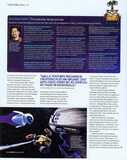
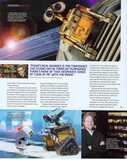
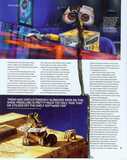
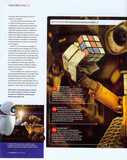
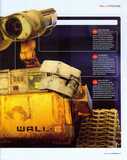
Pixar is once again breaking new ground in CG features with a movie that dispenses with dialogue to explore the expressive power of mechanics
It's easy to forget that Pixar has only been in the movie-making business for a little over a decade. Once the rank outsider a breakaway part of the Lucas empire struggling to make ends meet by selling its eponymous computer imaging system to the animation and medical professions, and only getting into the animation game as a way of showcasing that technology Pixar is now revered for its storytelling skills and an unbroken winning streak at the box office.
Tellingly, the concept for each film also generally reflects the passion and self-belief of the studio rather than an attempt to pander to test audiences and lowest-common-denominator tick boxes, WALL-E director Andrew Stanton even admits that the studio staff never really think about who their audience is. In retrospect, movies about feuding toys, a widowed fish, and cars that know 'it's about the journey rather than the destination' were all timeless but, at the time. each must have given the marketing people countless sleepless nights.
In terms of risk-taking concepts, however, all pale in comparison to WALL-E. It's a movie that not only dares to blend sci-fi and romance, but does 50 with two non-speaking stars, and, indeed, very little dialogue throughout. In fact, the stars are ostensibly machines. And, just to throw caution even further to the wind, it also dares to offer up a first act that depicts the life of a lone robot on an abandoned future Earth.
[…]
| Id | 5564 |
|---|---|
| Availability | Free |
| Inserted | 2020-12-02 |